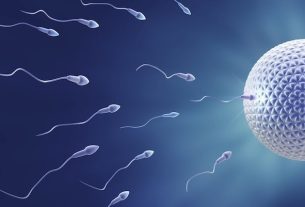After giving birth, some contraceptive options to use during breastfeeding are taking the contraceptive pill containing only progesterone, inserting an IUD or using a condom in all sexual relations, in order to prevent an unwanted pregnancy and allow the body to fully recover from the pregnancy. previous pregnancy, especially in the first 6 months.
During the breastfeeding period, you should avoid using combined hormonal contraceptives containing estrogen in addition to progesterone because the estrogenic component can harm the quantity and quality of breast milk by suppressing the production of prolactin, which is a hormone responsible for milk production.
It is important that the woman consults the gynecologist so that contraceptives can be evaluated and recommended during breastfeeding individually and that they are safe for the woman and the baby.

How to use contraceptives while breastfeeding
How to use contraceptives during breastfeeding depends on the method indicated by the doctor and includes:
1. Pill
The most recommended contraceptive pill during breastfeeding is the one that contains only progesterone in its composition, which is known as the minipill.
Generally, starting to use the minipill depends on the type of hormone indicated by the doctor, which may be:
- Desogestrel (Cerazette, Nactali): This contraceptive can be started between the 21st and 28th day after giving birth, taking one pill a day at the same time. During the first 7 days, an additional barrier method, such as a condom, should be used to prevent unwanted pregnancy;
- Linestrenol (Exluton): This contraceptive can be started between the 21st and 28th day after giving birth, taking one pill a day at the same time. During the first 7 days, an additional barrier method, such as a condom, should be used to prevent unwanted pregnancy;
- Noretisterona (Micronor): This contraceptive can only be started from the 6th week after giving birth, taking one pill a day at the same time. In the case of women who do mixed breastfeeding, that is, who in addition to breast milk gives the baby formula, the use of norethisterone can be started 3 weeks after birth, according to medical advice.
It is important to take the pill at the same time every day and if a dose is late or forgotten, a barrier method should be used, such as a condom, for example.
The use of the pill should always be done with medical advice and guidance.
2. Subcutaneous implant
The subcutaneous progesterone implant, known as Implanon, is a small stick inserted under the skin, which gradually releases the daily amount of hormone needed to inhibit ovulation. As it contains only progesterone in its composition, it can be used safely by breastfeeding women.
Implanon can be inserted from the 4th week after birth. During the first 7 days, a condom must be used to avoid unwanted pregnancy.
The implant is applied by the gynecologist, with local anesthesia, in a procedure that takes just a few minutes, in the arm region, where it can remain for up to 3 years, but can be removed at any time the woman wishes.
3. DIU
The IUD, or intrauterine device, is a very effective and practical contraceptive method, as there is no need to remember when to use it.
There are two different types of IUDs that can be used when breastfeeding:
- Levonorgestrel (Mirena): the IUD can start to be used from the 6th week after birth, as recommended by the doctor;
- Copper IUD (Multiload): The copper IUD can be inserted immediately after birth, or from the 6th week after a natural birth, or from the 12th week after a cesarean section.
The IUD can only be inserted by a gynecologist, in the office or hospital, and its contraceptive effect can last up to 10 years, in the case of the copper IUD, and around 5 years, in the case of the hormonal IUD. These devices can be removed at any time by the doctor, whenever the woman wishes. Learn more about these two types of IUD.
4. Diaphragm
The diaphragm is a small flexible ring, made of latex or silicone, that can be placed by the woman before intimate contact, preventing sperm from reaching the uterus.
This method does not protect against sexually transmitted diseases, and to prevent pregnancy, it can only be removed between 8 and 24 hours after intercourse.
5. Condom
Using condoms, whether male or female, is a good alternative for women who do not want to use hormones, which, in addition to preventing pregnancy, also protects women against diseases.
It is a safe and effective method, but it is important to evaluate the validity of the condom and that it is from a brand approved by INMETRO, which is the body that monitors the quality of the product. See the other mistakes that can be made when using a male condom.
6. Injectable contraceptive
The contraceptive injection, called Depo-Provera, contains medroxyprogesterone acetate, a type of progesterone, which serves to prevent unwanted pregnancy during breastfeeding.
This injection can be used from the 6th week after birth, applied by a healthcare professional, and with medical advice.
Does breastfeeding work as a contraceptive method?
In some cases, breastfeeding can work as a contraceptive method, if the baby is exclusively breastfed, without ingesting any other type of food or bottle. This can happen because when the baby breastfeeds several times a day, frequently and with a lot of sucking intensity, the woman’s body may not release the hormones necessary for the maturation of a new egg, for ovulation to occur and/or for birth to occur. favorable conditions for pregnancy.
However, this does not mean that a woman cannot get pregnant and, therefore, doctors do not recommend breastfeeding as a contraceptive method.
Natural contraceptive methods
Contraceptive methods known as natural, such as coitus interruptus, the table method or temperature control should not be used, as they are very ineffective and can lead to an unwanted pregnancy. If in doubt, you should talk to your gynecologist to adapt the best method to each woman’s needs, thus avoiding an unwanted pregnancy.

Sign up for our newsletter and stay up to date with exclusive news
that can transform your routine!
Warning: Undefined array key "title" in /home/storelat/public_html/wp-content/plugins/link-whisper-premium/templates/frontend/related-posts.php on line 12
Warning: Undefined array key "title_tag" in /home/storelat/public_html/wp-content/plugins/link-whisper-premium/templates/frontend/related-posts.php on line 13



